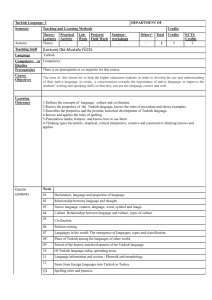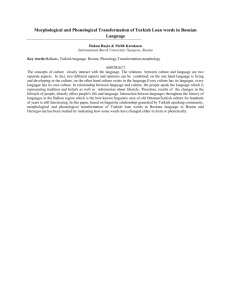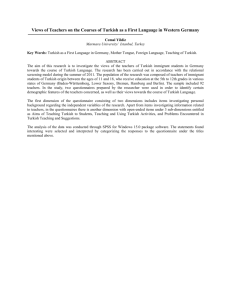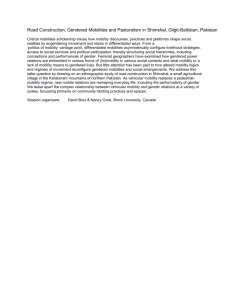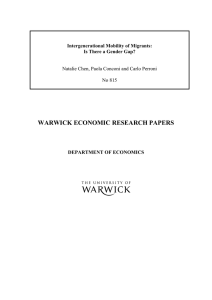GENDERED MOBILITIES OF TURKISH RESIDENTS IN BERLIN
advertisement
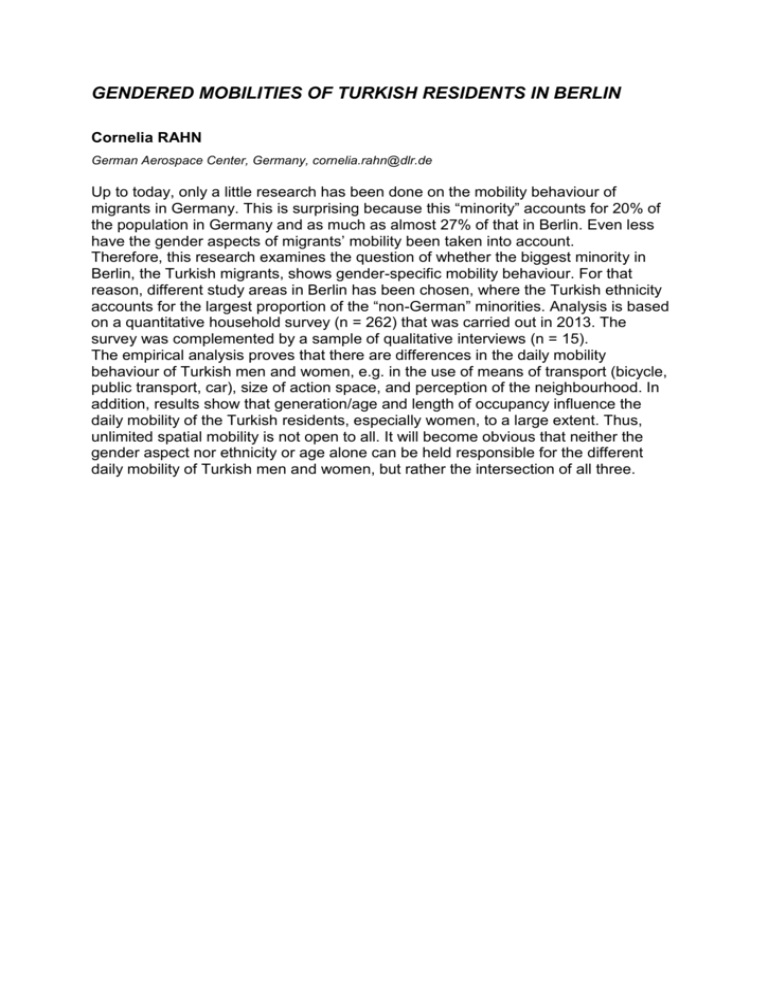
GENDERED MOBILITIES OF TURKISH RESIDENTS IN BERLIN Cornelia RAHN German Aerospace Center, Germany, cornelia.rahn@dlr.de Up to today, only a little research has been done on the mobility behaviour of migrants in Germany. This is surprising because this “minority” accounts for 20% of the population in Germany and as much as almost 27% of that in Berlin. Even less have the gender aspects of migrants’ mobility been taken into account. Therefore, this research examines the question of whether the biggest minority in Berlin, the Turkish migrants, shows gender-specific mobility behaviour. For that reason, different study areas in Berlin has been chosen, where the Turkish ethnicity accounts for the largest proportion of the “non-German” minorities. Analysis is based on a quantitative household survey (n = 262) that was carried out in 2013. The survey was complemented by a sample of qualitative interviews (n = 15). The empirical analysis proves that there are differences in the daily mobility behaviour of Turkish men and women, e.g. in the use of means of transport (bicycle, public transport, car), size of action space, and perception of the neighbourhood. In addition, results show that generation/age and length of occupancy influence the daily mobility of the Turkish residents, especially women, to a large extent. Thus, unlimited spatial mobility is not open to all. It will become obvious that neither the gender aspect nor ethnicity or age alone can be held responsible for the different daily mobility of Turkish men and women, but rather the intersection of all three.




